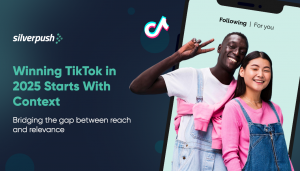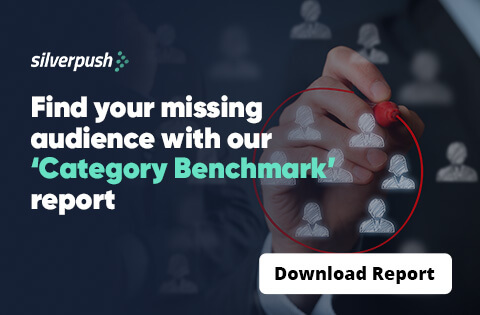Don’t Let Keyword Overblocking Kill Your Reach: Here’s What to Do | 11 Aug, 2023

For advertisers, protecting their brand from inappropriate content is of utmost priority. When advertisements appear alongside harmful content, it has the potential to significantly damage the brand’s reputation. According to data, 54% of consumers hold a negative perception of brands that associate themselves with morally conflicting content.
This, in turn, can have a substantial impact on their advertising revenue, leading to decreased click-through rates (CTRs) for ad campaigns.
But, protecting your brand image does not equal being too restrictive with keywords or blocking keywords excessively as this can negatively impact your reach and represent a hugely wasted opportunity for both sides of the advertising ecosystem.
If your brand struggles to reach more people due to blocking too many keywords in the past, this blog is here to help. Keep reading to learn how you can avoid overblocking keywords and improve your reach.
How Keyword Overblocking is Killing Reach and Monetization Opportunities
Many advertisers employ brand safety measures to ensure their ads are not displayed alongside inappropriate content. A common example is a children’s brand ensuring their ads don’t appear next to adult-oriented material.
Another layer of protection often used by advertisers and agencies is keyword blocking. This allows them to prevent ads from being shown alongside content containing specific words. For instance, a family-friendly brand might block the keyword “porn.”
However, excessive keyword blocking can lead to a problem called overblocking. This can diminish the reach of your online ads and cause your ads to miss out on relevant searches.
Several reasons highlight why overblocking can harm your ad campaign’s effectiveness:
1. Missed Relevant Searches: Overblocking can prevent your ads from showing up for searches closely related to your target keywords. For example, if you block “free shipping,” your ads might not appear for searches like “buy shoes with free shipping.”
2. Reduced Relevance: Overblocked ads may appear for irrelevant searches, making them less appealing to the audience. This can lead to fewer clicks.
Finding the right approach to keyword blocklists doesn’t have a one-size-fits-all solution. While some keywords (e.g., “terrorist”) are clearly necessary to block, an excessive list can overly restrict your digital advertising. This can lead to less effective spending and disappointing results.
Here’s How to Make Your Advertising More Inclusive

Of course, it’s important to focus our attention on brand safety. But as an industry, we need to think of new ways to implement brand safety without excluding creators based on their sexual orientation, race, or ethnicity.
The keyword blocklists that were relevant in the past might not be as effective today. Even though they needn’t be removed completely, you must regularly update them to avoid mistakenly classifying suitable content as harmful.
Ensure inclusion by amplifying preferred creators’ voices and carefully monitoring brand safety partnerships.
This final point is one we don’t see considered often enough. Working with a third-party brand safety and brand suitability partner can help with your brand safety measures.

Leverage the power of Silverpush, a leader in AI-driven contextual targeting, and its cutting-edge solution, Mirrors.
It offers custom targeting and exclusion themes to accurately identify unsafe content across a comprehensive set of brand safety categories. It ensures that only the unsafe video or page is blocked and not the entire channel or website to
Avoid over-blocking or killing reach.
This is done across multiple platforms, such as YouTube, Openweb, and Meta, using natural language processing (NLP) and semantic analysis.
Moreover, Mirrors’ Multicultural targeting approach ensures avoiding stereotypical assumptions and targets diverse audiences through inclusive and personalized ads that respect individual preferences.
It does not end here, Mirrors offers a multitude of capabilities, to know how Mirrors can effectively solve the overblocking problem and ensure your reach is uncompromised, fill out the form on your right and an expert from our team will contact you soon.
Last Words
In the advertising industry, it’s essential to embrace changes to brand safety measures to ensure that we are not excluding words, phrases or languages that could exclude minority groups. It’s time to move forward with your approaches to brand safety. When we do, we’ll be creating an online world that promotes positivity and inclusivity.

BLOGS
3 Takeaways from Cannes 2025: From Performance to Relevance
Last month, Silverpush team kicked off the #SummerOfContext in a big way at the Cannes Lions International Festival of Creativity 2025. To start off the week, we launched a brand new contextual targeting solution for TikTok to help brands with brand safety and higher relevance. We also announced our ...

BLOGS
Partner Spotlight: Ben Salaman, Senior Strategist at PB&
1. Tell us about your agency. What makes you stand out? PB& is a small, independent agency that was founded by people who have spent a lot of their careers in larger agencies. We saw that creativity and efficiency often tend to suffer due to silos, so our founder decided to ...

BLOGS
How to Win at TikTok Advertising in 2025 With Contextual Targeting
TikTok is no longer just a platform for viral dances and trending audio, it’s now a serious force in the advertising world. With nearly 2 billion users and over 1.8 billion reachable through ads, it’s where your audience is spending their time. But while TikTok delivers unmatched reach, it hasn’t ...







